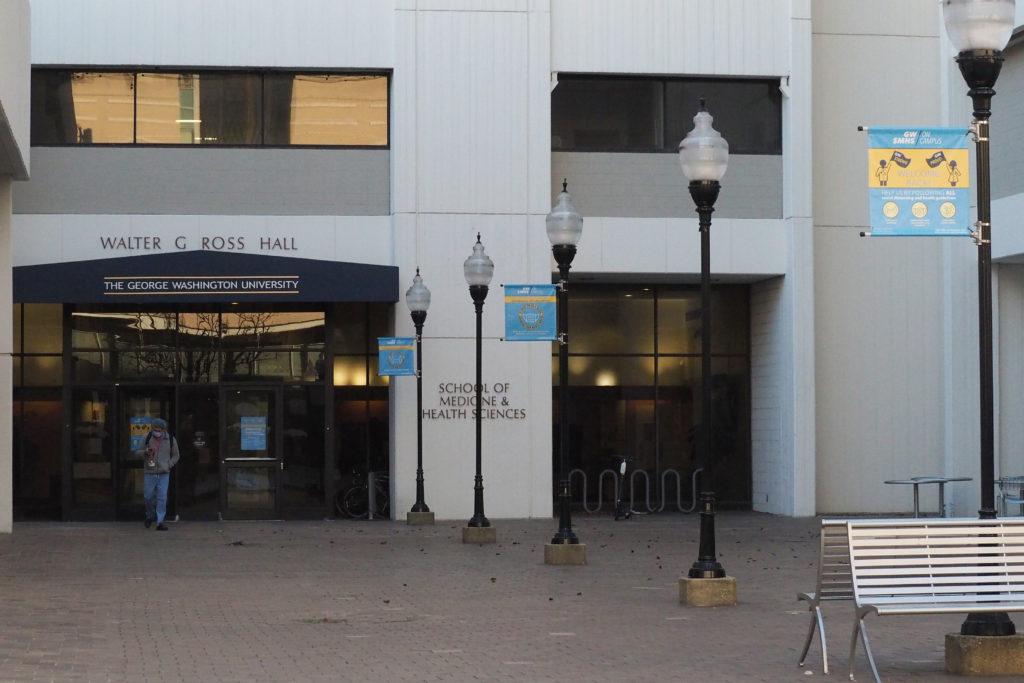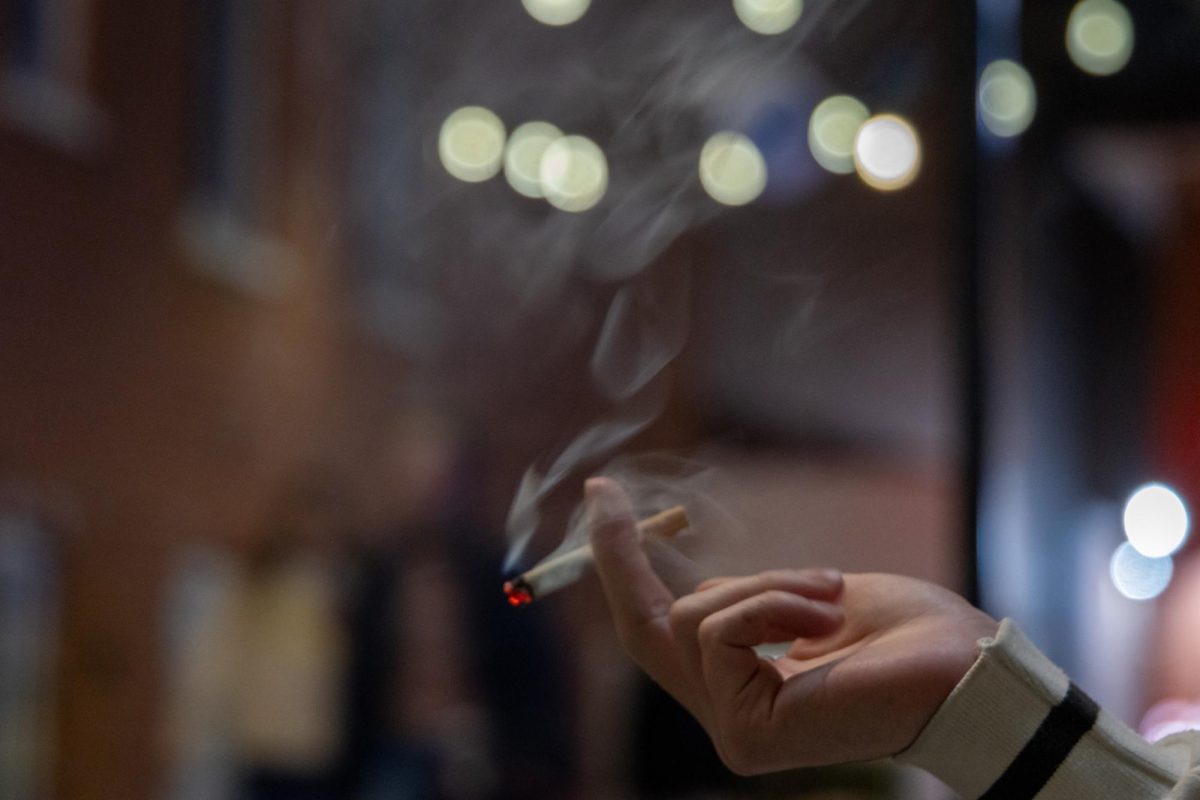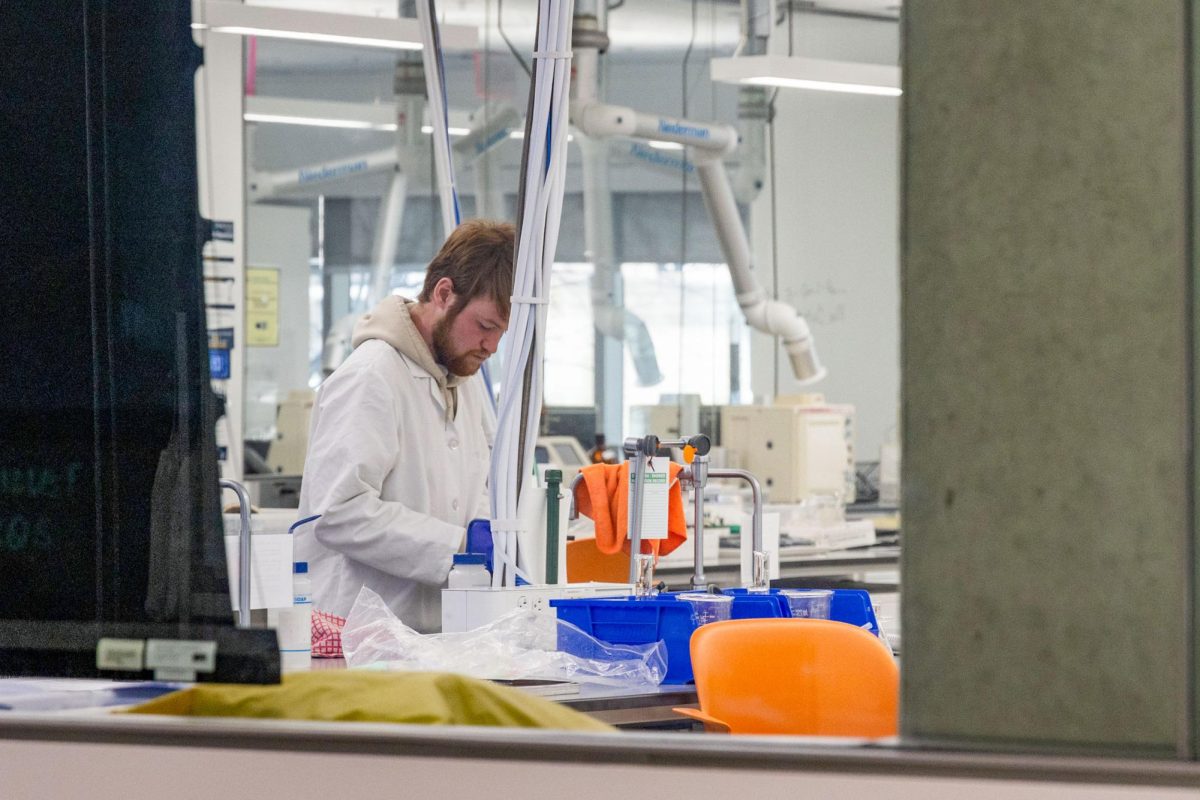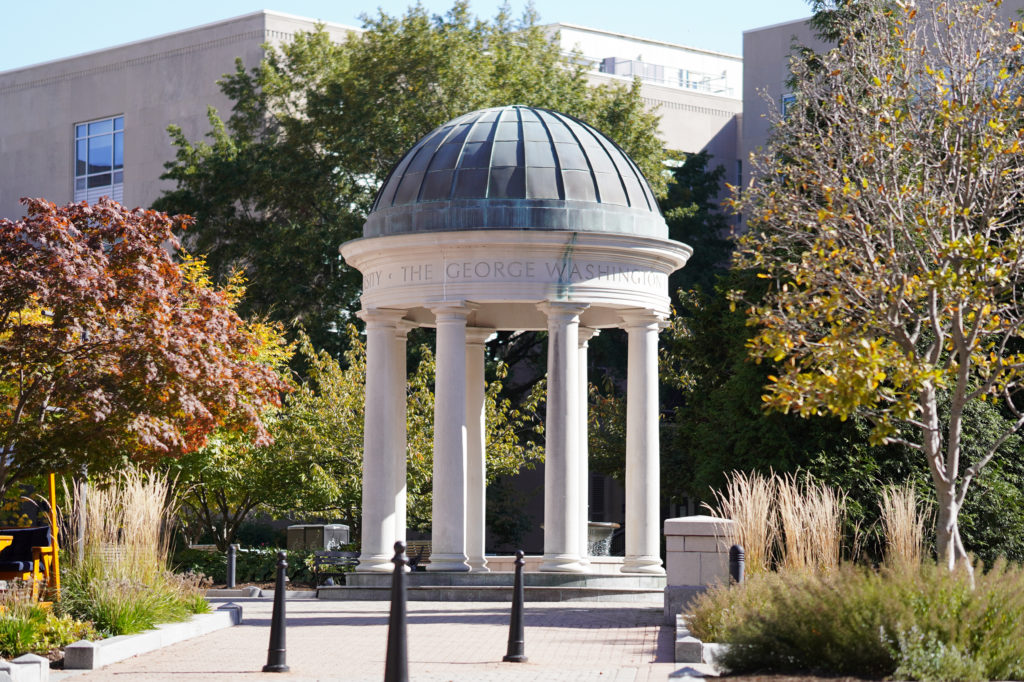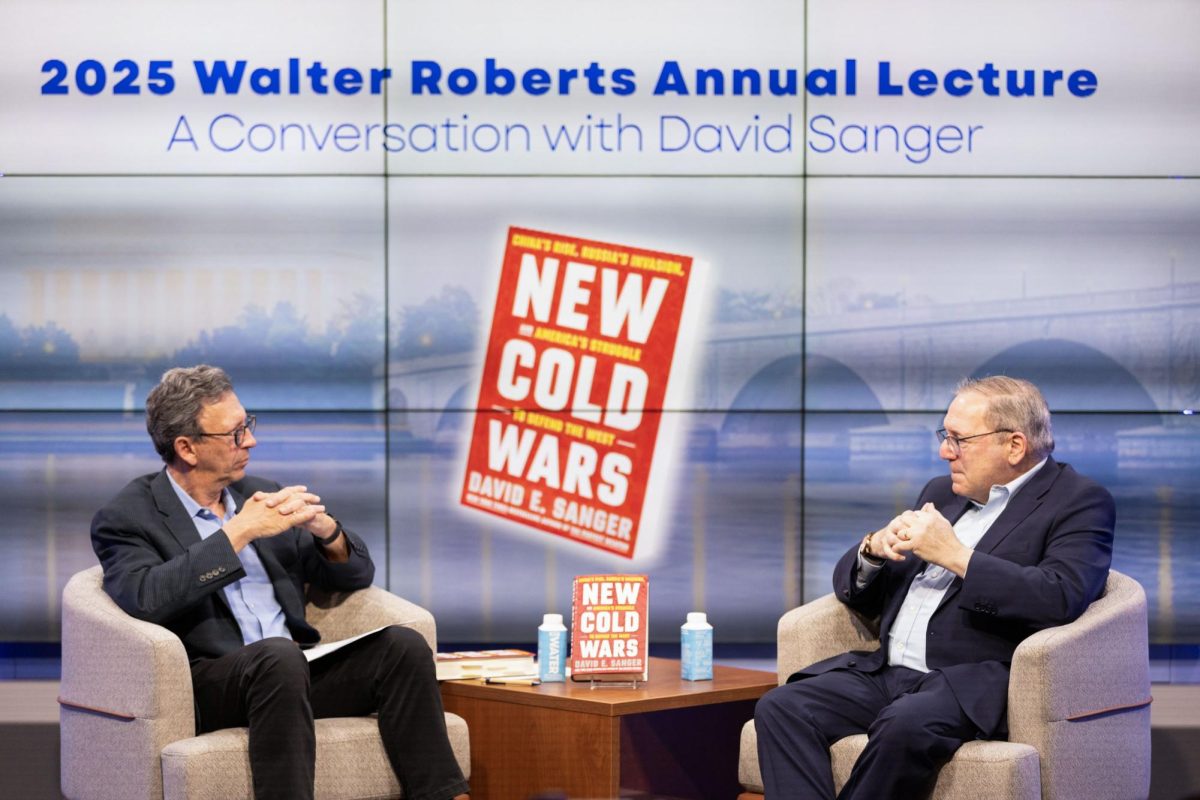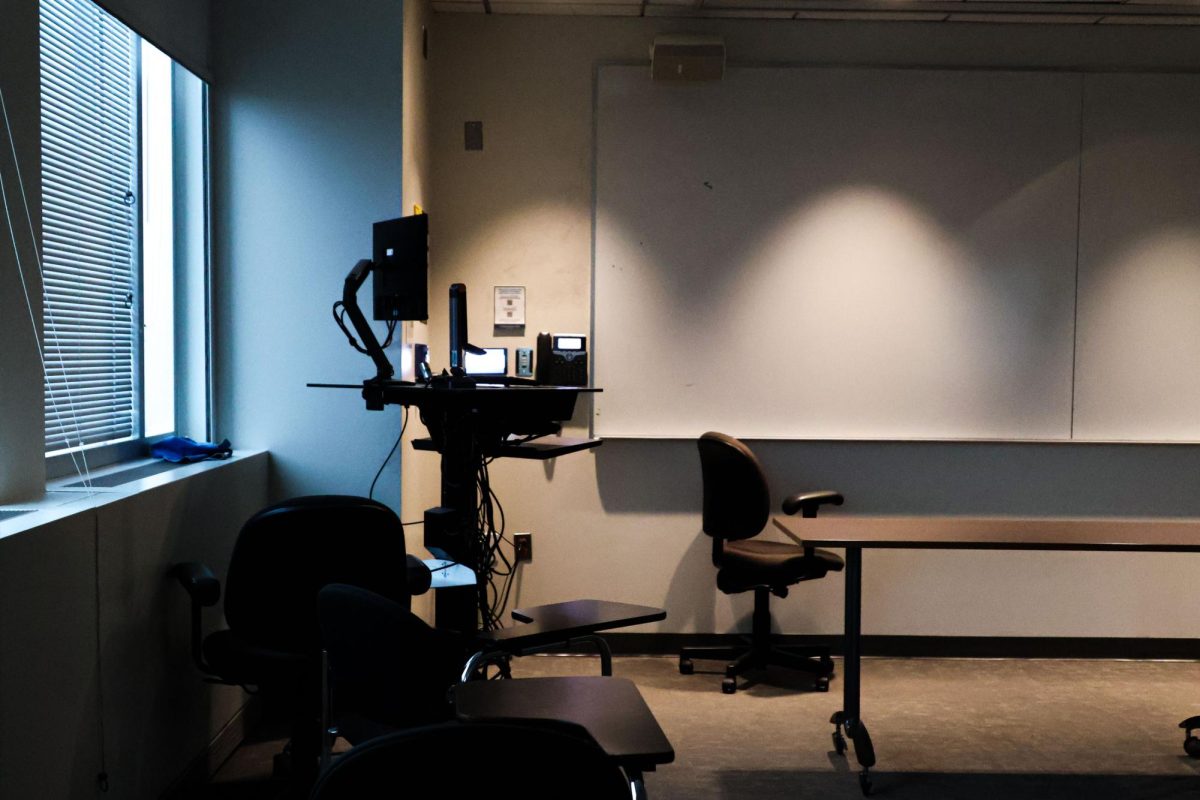Updated: Jan. 12, 2021 at 2:37 p.m.
Officials from the School of Medicine and Health Sciences received a grant last month to construct a science learning center for a high school in Alexandria, Virginia.
Using a $700,000 grant from Virginia Gov. Ralph Northam’s Growth and Opportunity for Virginia grant program, which aims to create economic growth throughout the commonwealth, three SMHS faculty will help establish a learning center equipped with virtual and augmented reality technology. The space will become part of the high school’s Governor’s Health Sciences Academy, which SMHS launched in 2018.
Teri Capshaw, the principal investigator in the project and an adjunct professor of clinical research and leadership in the medical school, said the center will include two virtual and augmented reality teacher work stations, 20 student laptops and STEM-H software. She said a company from Columbus, Ohio, is leading the center’s construction and will begin work in the next few weeks.
“Our vision is for this initiative to serve as a best practice for other areas in Virginia and the region,” Capshaw said in an email. “We feel strongly that this innovative model, linking secondary education, community colleges and four-year institutions, will benefit students in numerous ways and better prepare our future workforce in STEM-H fields.”
Kevin O’Connor, an associate professor of medicine and senior medical adviser to the medical school, said among the software available will be a 3D model of the human body that will allow students to simulate dissections.
“The center will incorporate the latest immersive learning technologies to support critical thinking and applied learning to maximize student learning and engagement,” he said in an email. “Our program also offers learning experiences that engage experts in the field and incorporates state-of-the-art AR and VR, so students are provided with an immersive learning experience that builds and promotes teamwork.”
Linda Zanin, the medical school’s director of strategic partnerships, said she learned about the grant opportunity and developed the idea for the center alongside Capshaw and O’Connor, who have together been involved in the Health Sciences Academy since its establishment in 2018.
SMHS leadership established the Health Sciences Academy at T.C. Williams High School to encourage students from lower-income families to join the medical field. Students who are accepted to and attend the academy are guaranteed admission to the medical school.
“We came up with the concept for the Community Medi-Corps Program and the Immersive Learning Center,” Zanin said in an email. “With the support of Dr. Reamer Bushardt, [senior associate dean for health sciences], we invited community partners and neighboring school systems to join us in the initiative and we put our grant application forward.”
Michelle Coffman, the dual enrollment and academy coordinator at T.C. Williams High School, said the learning center will help them excel in their STEM courses.
“The unit also provides a great opportunity to connect with the community and provide experiences for the students outside of traditional classroom settings,” Coffman said in an email. “It will also provide opportunities to work with health programs in neighboring school districts and share best practices.”
A release from Northam’s office states the center will help prepare students for careers in the biomedical, lab sciences and pharmaceutical industries.
Experts in postsecondary education said the center can provide students with hands-on learning experiences and encourage them to stay in STEM and health care fields after graduation.
William Corrin – the director of K-12 education at MDRC, an organization that researches social policy – said high school and university partnerships are beneficial because they smooth the transition for students, making it “less of a gap and more of a bridge.”
“Those transition points are usually the places where there’s the greatest risk for students to experience some kind of disruption to their educational trajectory,” Corrin said.
Max Milder – the director of research at EAB, an education research organization – said partnerships between higher education institutions and high schools can create a pipeline of leading new students to the institution.
“Universities are always interested in how they’re going to continue to attract future students or enrollments in the coming years,” he said. “There’s a part of this that is getting George Washington University in front of high school students as early as possible, even before they’re going into that decision-making process for enrollment.”
Milder said exposing high school students to high-level technology that’s common in medical education familiarizes students with what they’ll be using throughout their medical careers.
“Experiential learning is really critical,” he said. “And that’s true in K-12. That’s true in higher education as well. And so part of the effort here is to bring some of these scientific or medical concepts to life and do so in a way that is really engaging and hopefully fun for the students as well.”
This post has been updated to clarify the following:
A previous version of the story referred to EAB by its former name, Education Advisory Board.


